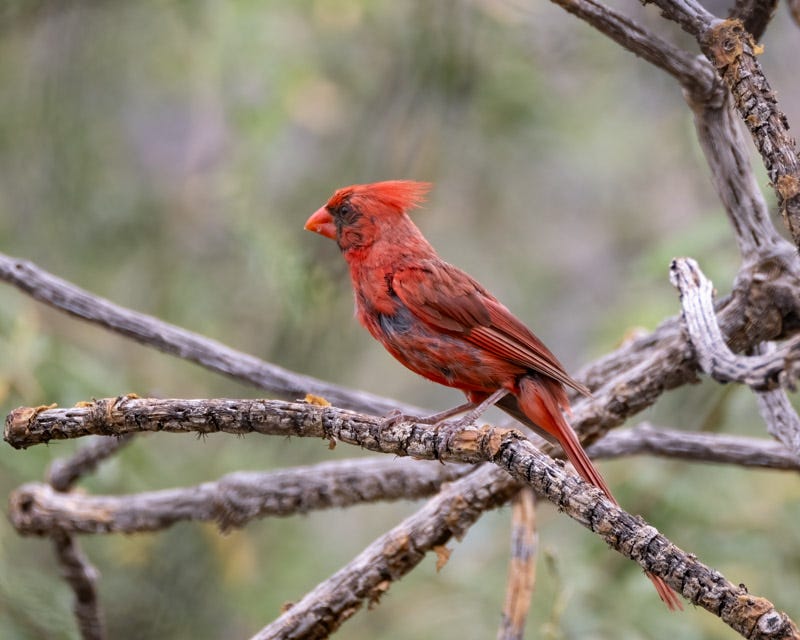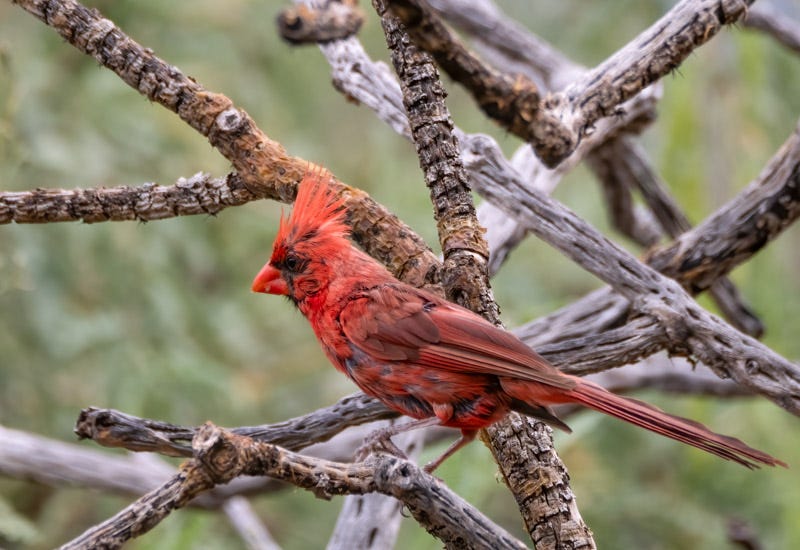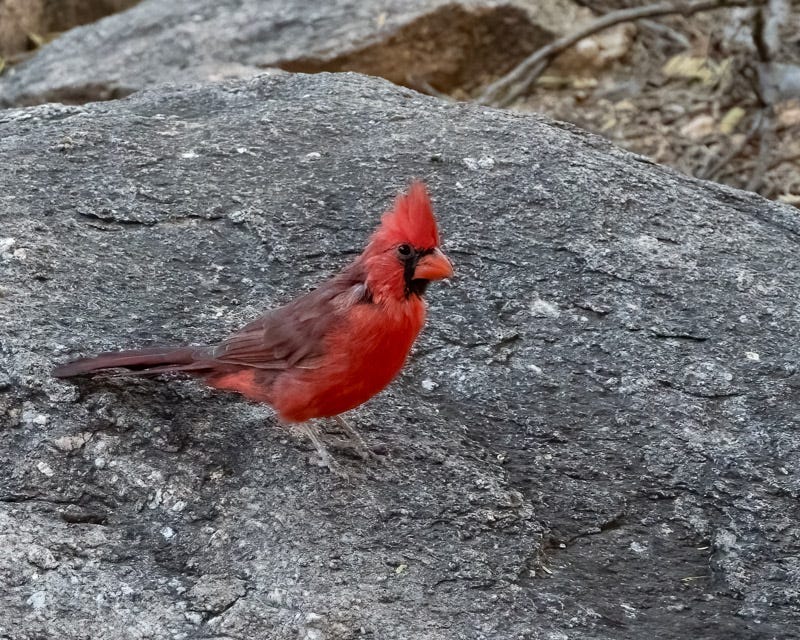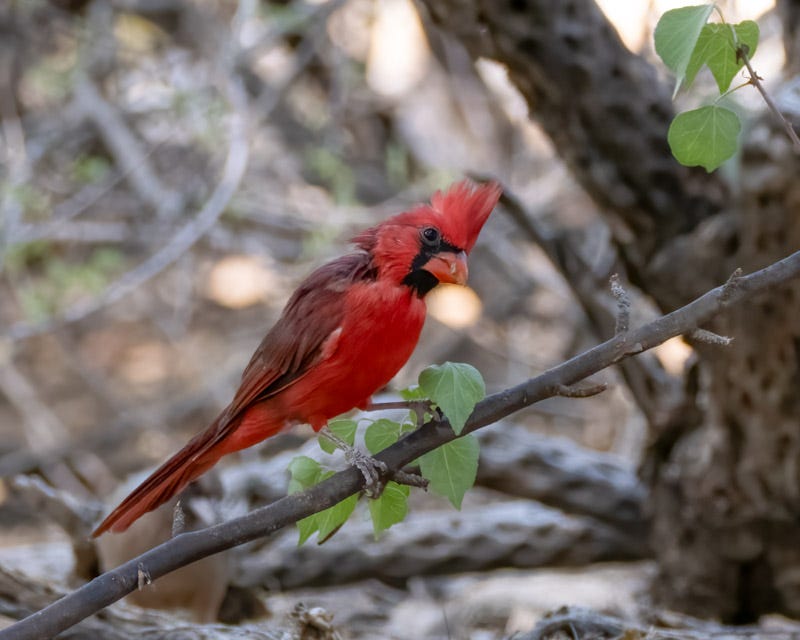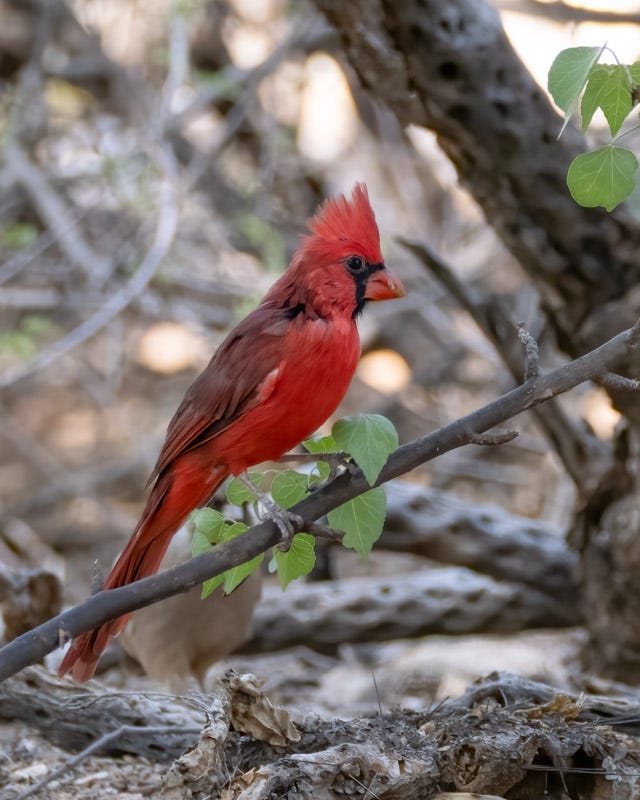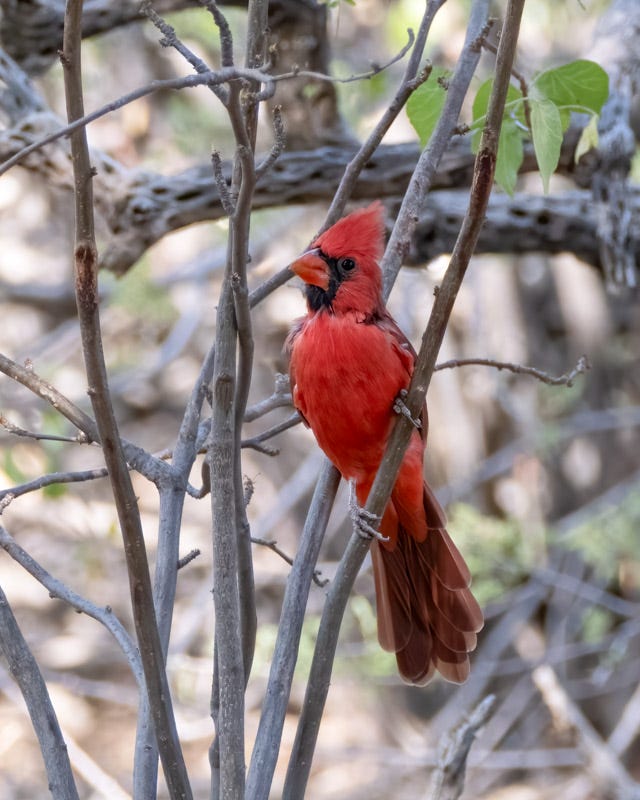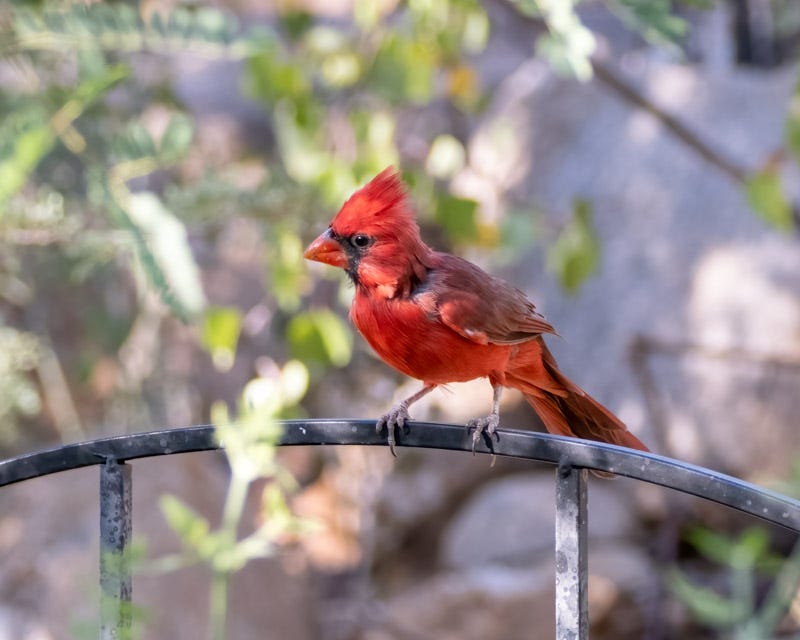A Molting Cardinal
Oct. 6, 2024: A handsome bird molts all of its feathers after breeding season
Feathers on birds are not alive and, similar to hair or nails in humans, they are made of the same basic ingredient: the protein keratin. When feathers are damaged, they cannot heal themselves. Small birds molt all of the feathers annually, dropping them and replacing them with new healthy feathers. The first week of August, this male Northern Cardinal visited my yard. You can see how he is in the middle of this process of replacing all of his feathers.
It takes a lot of energy to build new feathers. Birds will not molt during breeding season when their energy is needed elsewhere. After breeding season, and often before migration (for birds which migrate) birds will have the energy to go through their molt. Despite the way they look, birds like the Cardinal below are very capable of fending for themselves. They just don't look as pretty. When the Cardinals enter my backyard, they usually prefer arriving at this nearly dead cholla plant where they will stop before flying in.
Six weeks later, in mid-September, you can see how much this Cardinal has changed. It no longer looks so patchy and the brilliant red is back, but there are still spots on the back of its neck and other areas waiting to fill in.
]
When the Cardinal tilts its head forward, you can see the rough edges on his nape.
With its head up, the Cardinal looks pretty good. Some shoulder feathers are missing but otherwise this bird has nearly finished his seasonal molt. Some birds molt into a dull plumage when outside of their breeding season. The Cardinal still show their bright red colors year-round.
The Cardinal was nice enough to flitter around the limber bush, offering me photo opportunities from a variety of perches. In this shot, you can see how the molt of his tail feathers occurs. Usually birds molt their tail feathers beginning on the inside pair, and then moving to the next pair and then the next. They won't lose all of their tail feathers at once. In the shot below you can see that the pair of his inside tail feathers have grown the longest, then the next pair and so on. There is a nice cascading pattern of tail length during this molt until all of the tail feathers grow out completely.
The Cardinal hopped over to a spot that was thickly planted. I assume he was hoping to find insects there. Birdnote has a nice story titled "Meet the Cardinal": https://www.birdnote.org/podcasts/birdnote-daily/northern-cardinal-meet-cardinal
My next email will feature another bird going through an unusual feather loss.
For more information on bird molts, see Audubon's https://www.audubon.org/news/understanding-basics-bird-molts
or check out the similar piece by CornellLab's All About Birds
https://www.allaboutbirds.org/news/the-basics-feather-molt/


